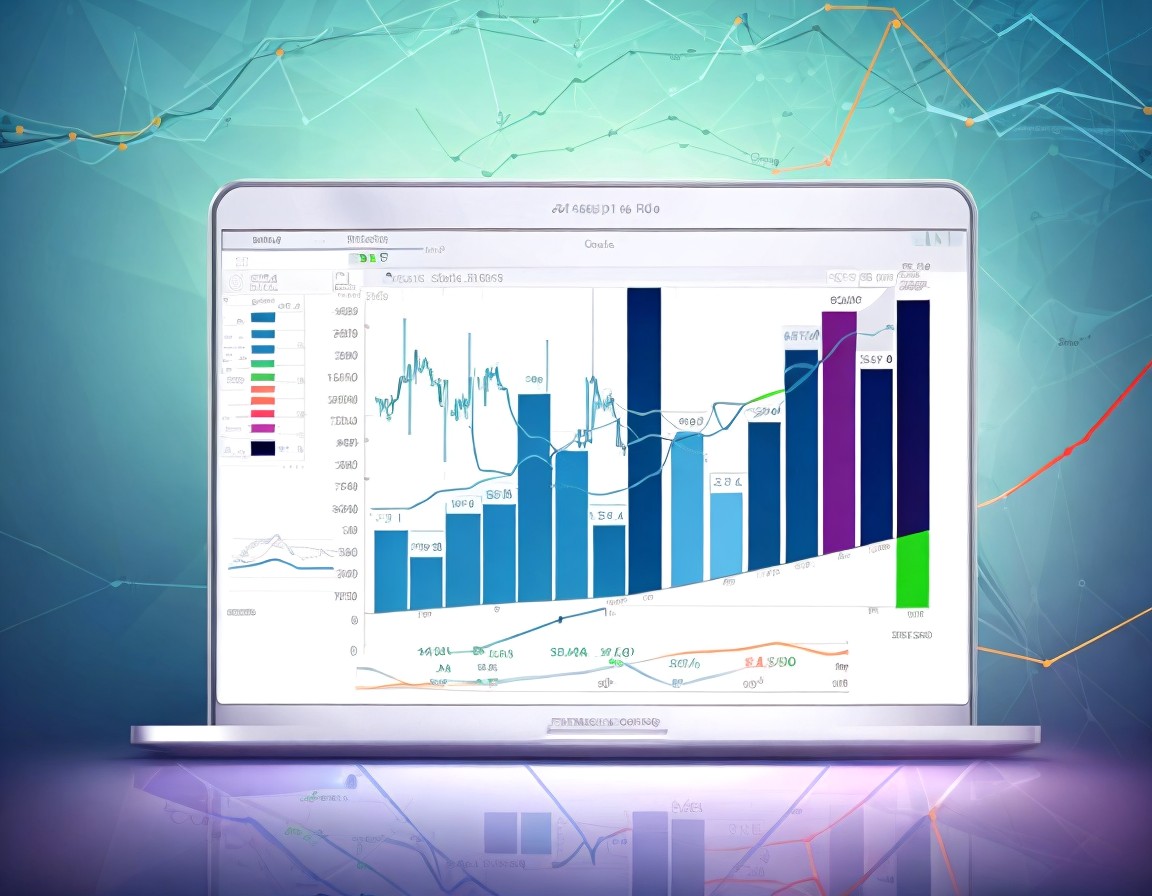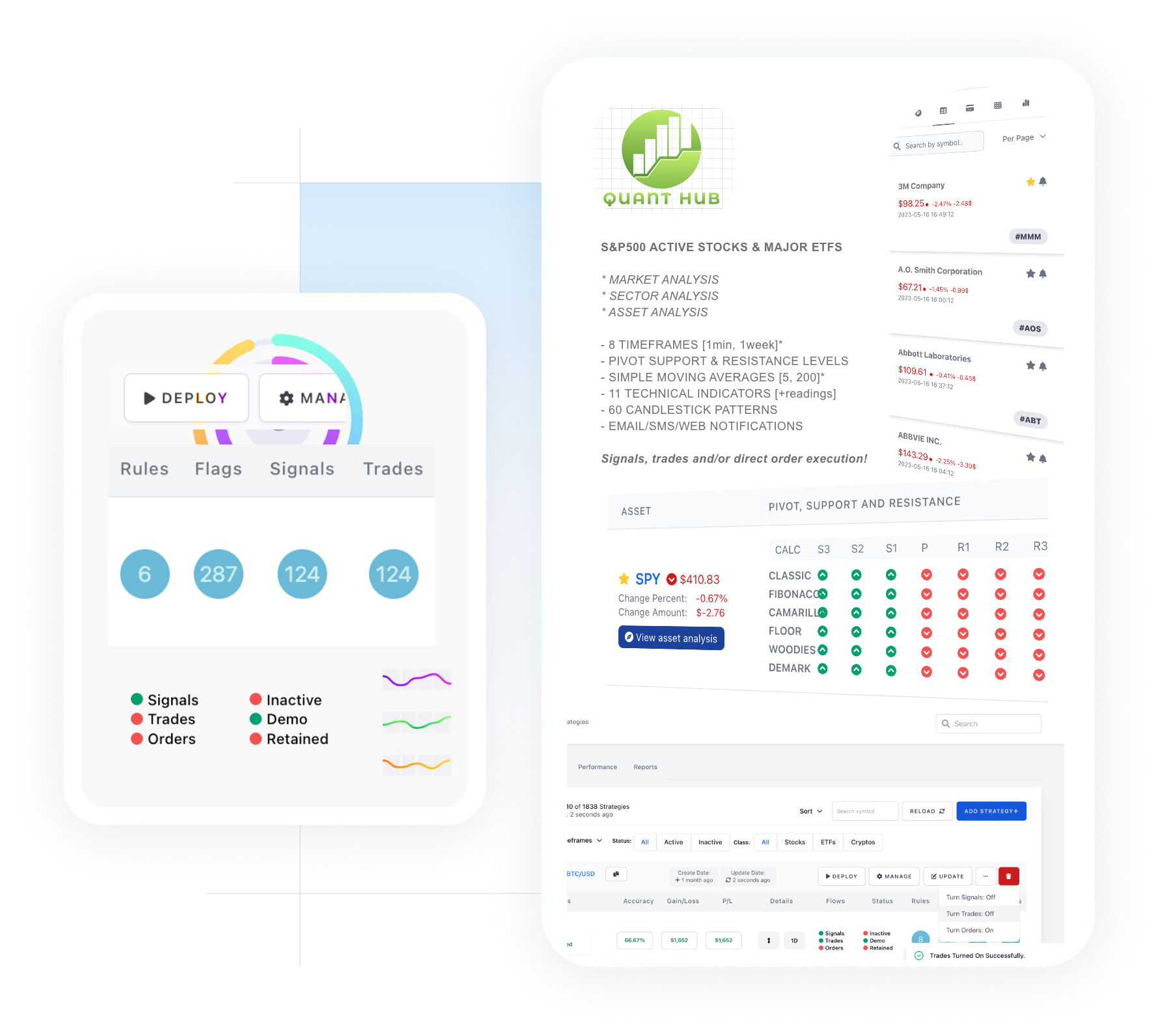Navigating the Stock Market
A comprehensive guide for beginners, investors, and future traders
1. Introduction to Stock Trading
Understanding the basics of stocks and stock trading is crucial for any investor or trader. This comprehensive guide covers everything from foundational concepts to advanced trading strategies, helping you navigate the stock market with confidence.
The world of stock trading can be both exciting and complex. To succeed, you must grasp the fundamental concepts of stocks, understand their functionality, and recognize their role in financial markets. This section lays the groundwork by defining stocks, explaining their mechanics, and discussing their importance.
What Are Stocks?
Stocks are ownership stakes in companies, representing a share of their assets and earnings. Investors buy stocks to potentially profit from price appreciation and dividends, influenced by company performance and market conditions. These investments play a vital role in portfolios, offering growth potential and a means to participate in a company's success.
How Stocks Work?
Stocks involve investors buying ownership shares in companies, entitling them to assets and earnings. Investors profit through price increases and dividends, influenced by company performance and market conditions. Understanding stock market dynamics, including supply and demand, investor sentiment, and economic factors, is crucial for making informed investment decisions.
Why Trade Stocks?
Trading stocks offers the potential for substantial returns compared to other investments, though it involves risk. The stock market has historically provided an average annual return of about 7% after inflation. Investors trade stocks to build wealth, diversify portfolios, and capitalize on market opportunities driven by economic growth and corporate profitability.
Stocks are a vital component of the financial markets, offering investors the opportunity for growth and income. By understanding the basics of stocks and how they are traded, you can make informed decisions and potentially reap significant rewards.
Different Types of Stocks
The stock market is divided into primary and secondary markets. The primary market involves the issuance of new stocks, while the secondary market is where existing stocks are traded. Understanding the various types of stocks is essential for creating a diversified portfolio and making informed investment decisions.
Common Stocks
- Represent ownership in a company with potential dividends. Voting rights, variable dividends, higher potential returns.
Preferred Stocks
- Provide fixed dividends and are less volatile. Priority in dividend payments, fixed dividend yields, less risk compared to common stocks.
Class A and Class B Stocks
- Different classes of common stock with varying voting rights. Class A typically has more voting rights.
Large Cap Stocks
- Stocks from companies with market caps over $10 billion. Walmart, Coca-Cola.
Mid Cap Stocks
- Stocks from companies with market caps between $2 and $10 billion. Balanced growth potential and risk.
Small Cap Stocks
- Stocks from companies with market caps under $2 billion. Higher growth potential but more volatile.
Growth Stocks
- Stocks expected to grow at an above-average rate. Higher potential returns, often reinvest profits.
Value Stocks
- Stocks priced below their intrinsic value. Lower price-to-earnings ratio, potential for significant returns.
Dividend Stocks
- Stocks that provide regular dividend payments. Johnson & Johnson, 3M.
Blue Chip Stocks
- Stocks from large, financially stable companies. Reliable earnings, strong market position.
Penny Stocks
- Low-priced stocks of small companies. High risk, low liquidity, potential for high rewards.
International Stocks
- Stocks from companies outside the U.S. Diversification opportunities, exposure to global markets.
Different types of stocks offer various benefits and risks. Understanding these types can help you create a diversified portfolio that aligns with your investment goals and risk tolerance.
Example: Suppose you purchase 100 shares of Company X at $50 each. If you sell them later at $60 each, you make a profit of $1,000 (100 shares x $10 gain per share).
A solid understanding of these foundational concepts prepares you for more in depth exploration of stock trading strategies and tools.
2. Getting Started with Stock Trading
Embarking on your stock trading journey requires careful planning and decision making. This section provides a step by step guide to help you get started, including setting financial goals, selecting a brokerage, and understanding different types of stock orders to build a diversified portfolio.
Setting Financial Goals
Define what you want to achieve with your investments, whether it's for short term gains, long term growth, or retirement. Clear goals help guide your trading strategy.
Understanding Risk Tolerance
Assess how much risk you are willing and able to take. This evaluation will influence your trading decisions and strategy. Remember, the number one rule; Don’t trade money you CANNOT afford to lose.
Choosing a Brokerage Account
Selecting the right brokerage is crucial as it can significantly impact your trading experience and overall success. When choosing a brokerage, consider factors such as fees, platform features, customer support, and available tools. Your choice should align with your individual trading needs and preferences.
Choosing the right broker and trading platform is crucial for executing trades efficiently and accessing essential tools and resources. This section highlights some of the top stock trading platforms available today.

Schwab, Think or Swim
Features: Advanced charting tools, paper trading, extensive research tools. Advantages: High customization, strong educational resources.

Interactive Brokers
Known for low margin rates, per-share pricing, and extensive tools. No minimum balance required and includes the IBot AI chatbot for support.

Fidelity Investments
Provides customizable platforms and no commissions for local shares. Renowned for its extensive trading technologies and excellent customer support.

Merrill Edge
Learning resources and both basic and advanced order types provided. Benefits from integration with BAC accounts and strong mobile app support.
With a solid grasp of your goals, risk tolerance, brokerage options, and different types of stocks, you’re well-prepared to start trading. The next step involves delving into stock analysis to make informed and strategic trading decisions.
3. Stock Analysis
Effective stock analysis combines both fundamental and technical approaches to evaluate potential investments. This section covers the essential metrics, techniques, and tools used to assess stock value and forecast future price movements.
Fundamental Analysis
Fundamental analysis focuses on assessing a stock’s intrinsic value by examining economic and financial factors. Some traders like to evaluate the company’s management and its position within the industry to understand its future growth potential. Some fundamental factors investors and trader consider are:
Price-to-Earnings (P/E) Ratio
The P/E ratio shows how much investors are willing to pay for each dollar of earnings. A higher P/E ratio may indicate overvaluation, while a lower P/E ratio could suggest potential undervaluation risks.
Earnings Per Share (EPS)
The EPS represents a company’s profit allocated to each share of it's stock. A higher EPS value generally indicates stronger financial performance while a low EPS value could suggest weaker financial performance.
Price-to-Book (P/B) Ratio
The P/B ratio compares a company’s market value to its book value. A lower P/B ratio might suggest that the stock is trading below its intrinsic value while a higher P/B ratio could suggest lower intrinsic value.
In addition to these metrics, analyzing financial statements to gauge a company’s performance helps you better understand current company performance and future forecasts:
Balance Sheet
Provides insight into a company’s assets, liabilities, and equity, offering a snapshot of its financial stability.
Income Statement
Details the company's revenue, expenses, and profits, helping both investors and traders assess its profitability.
Cash Flow Statement
Shows the cash inflows and outflows, revealing the company’s liquidity and operational efficiency.
Technical Analysis
Technical analysis involves studying price movements and trading volumes to predict future stock price trends. It relies on historical data to identify patterns and trends using charts to recognize patterns like head and shoulders or double tops, which can signal potential future price movements. Some of the most popular technical indicators investors and trader consider are:
Relative Strength Index (RSI)
Measures the speed and change of price movements to assess overbought or oversold conditions.
Moving Average Convergence Divergence (MACD)
Indicates changes in trends and potential buy or sell signals.
Moving Averages
Smooths out price data over a specific period to identify trends.
Trends and Support/Resistance Levels
Identify market trends and key price levels where stocks are likely to reverse direction.
By integrating fundamental and technical analysis, you can develop a well-rounded view of a stock’s potential and make more informed trading decisions.
4. Stock Trading Strategies
Having a solid trading strategy is essential for success in the stock market. This section outlines various stock trading strategies to help you determine which approach aligns with your goals and risk tolerance.
Day Trading
- Buying and selling stocks within the same trading day.
Swing Trading
- Holding assets for longer periods capitalizing on price movements.
Value Investing
- Buying undervalued stocks based on fundamental analysis.
Growth Investing
- Investing in stocks expected to grow at an above-average rate.
Dividend Investing
- Investing in stocks that provide regular dividend payments.
Index Investing
- Investing in a broad market indexes for diversified exposure.
Momentum Trading
- Investing in stocks showing a trend of upward or downward movement.
A well-defined trading strategy can help you navigate the complexities of the stock market and achieve your financial goals. Choose a strategy that aligns with your risk tolerance and investment objectives.
5. Understand Risk Management
Effective risk management is essential for protecting your investments and achieving long-term success. It safeguards your investments from significant losses and ensures sustainable growth. One key strategy is setting stop-loss orders, which automatically sell a stock when its price falls to a specified level, thereby limiting potential losses. Another important approach is position sizing, where you determine how much capital to allocate to each trade based on your risk tolerance and portfolio size. Diversification, which involves spreading your investments across various assets, helps minimize risk and avoid overexposure to any single investment. By implementing these effective risk management strategies, you can protect your investments and confidently navigate market volatility.
6. Executing Trades
Executing trades efficiently is key to successful trading. This section explains the process of placing buy and sell orders, understanding different order types, and ensuring effective trade execution.
Placing Buy and Sell Orders
Execute trades based on your chosen strategy and market conditions.
Market, Limit, Stop, and StopLimit Orders
Understanding various types of stock orders is essential for executing trades effectively and aligning them with your trading strategy. Here’s a breakdown of the most common order types:
Market Orders
A market order buys or sells a stock immediately at the best available price. It's the quickest way to execute a trade, but it may result in unexpected prices due to market fluctuations. While market orders ensure fast execution, the trade might be completed at a price significantly different from expected, especially in volatile markets.
Limit Orders
A limit order specifies the maximum price you’re willing to pay when buying a stock or the minimum price you’re willing to accept when selling. This order type ensures that you don’t pay more or sell for less than your set price, but it may not be executed if the stock doesn’t reach your specified price.
Stop Orders
A stop order becomes a market order once a specified stop price is reached. It is used to limit losses or protect profits. For example, a stop-loss order triggers a sale when the stock price falls to a certain level, helping you minimize potential losses.
Stop-Limit Orders
This order combines features of stop and limit orders. Once the stop price is reached, the order becomes a limit order rather than a market order. This allows you to specify a price range for execution,but also carries the risk of the order not being filled if limit price isn't reached.
By understanding these order types, you can better manage your trades and execute them in line with your strategy. Whether aiming for immediate execution or precise pricing, selecting the appropriate order type helps in achieving your trading objectives. Effective trade execution is essential for achieving your trading goals and ensuring that your orders are processed as intended.
7. Trading Tools and Resources
Utilizing various tools and resources can enhance your trading decisions and streamline your research. This section explores essential tools for stock trading, including stock screeners, calendars and analytical resources.
What Are Stock Screeners?
Stock screeners help filter stocks based on criteria like market cap, P/E ratio, and dividend yield. They are essential tools for identifying investment opportunities.
Popular Stock Screeners
- - RankMyTrade: Offers a variety of stock, gap, and candlestick screeners
- - Yahoo Finance: Provides extensive stock data and screening capabilities.
- - FINVIZ: User-friendly with global stock access. Offers a range of filtering options and visual tools.
- - MarketWatch: Features stock screening and financial analysis tools.
Stock screeners are invaluable for identifying investment opportunities and making informed decisions. Select a screener that complements your trading style and objectives. Using these tools helps streamline your research process, enhance your analysis, and make informed trading decisions.
Other Trading Tools
News and Analysis
Stay updated with financial news from sources like RankMyTrade.com, Bloomberg, CNBC, and Reuters.
Calendars
Explore different calendars that track economic events, indicators and company data that may impact stock prices.
8. Advanced Trading Concepts
Advanced trading concepts offer additional opportunities and risks beyond traditional stock trading. This section covers options trading (8.1), futures (8.2) and forex (8.3) to enhance your trading toolkit.
8.1 Option Trading Basics
Options trading offers unique opportunities and risks different from traditional stock trading. This section will explain what options are, how they work, and how to start trading them.
Options are financial derivatives that provide the right, but not the obligation, to buy or sell an asset at a predetermined price before a specified date.
Types of Options
Call Options
Give the right to buy an asset at a set price.
Put Options
Give the right to sell an asset at a set price.
Factors Affecting Options Prices
Several factors influence options prices, including the underlying asset price, which is the price of the asset on which the option is based. The time to expiry, or the time remaining until the option expires, also plays a crucial role. Additionally, the volatility, or the extent of price fluctuations of the underlying asset, significantly affects options pricing.
To start trading options, it is essential to understand the basics, including call and put options and their pricing mechanisms. Educate yourself on various trading strategies and market factors. Choosing a broker that offers the necessary tools and resources is also critical. Familiarize yourself with key terms such as strike price and expiration date. Lastly, stay updated by monitoring market trends and news to make informed decisions.
Options trading offers significant opportunities but requires a thorough understanding of the market. By educating yourself and starting with a practice account, you can build the skills necessary for success. Options trading can be highly profitable but requires a solid understanding of the market. Utilize demo accounts to practice before investing real money.
8.2 Futures Trading Basics
Futures trading involves contracts that obligate the buyer to purchase, or the seller to sell, an asset at a predetermined future date and price. These contracts have standardized terms, including the quantity and quality of the underlying asset. Trading futures often allows for leverage, meaning a small initial margin can control large positions with less capital.
Several factors influence futures prices, including the current market price of the underlying asset, supply and demand dynamics, and economic indicators such as interest rates and inflation. Futures trading can be a powerful tool for diversifying your portfolio and taking advantage of market opportunities. However, it's crucial to understand the mechanics, market dynamics, and risks involved. By educating yourself and practicing with demo accounts, you can develop the skills necessary to trade futures successfully.
8.3 Forex Trading Basics
Forex trading involves buying and selling currencies to profit from fluctuations in exchange rates. Key factors that influence prices include interest rates, economic data, and political events. The forex market operates 24 hours a day during the week, providing continuous trading opportunities. It is characterized by high liquidity, with substantial trading volumes, and leverage, which allows traders to control large positions with smaller amounts of capital.
Forex trading offers significant opportunities due to its high liquidity and around-the-clock trading. However, success in forex requires a solid understanding of currency pairs, market influences, and risk management strategies. By staying informed and practicing diligently, you can navigate the forex market effectively.
Navigating the world of stock trading involves mastering a range of concepts from stock analysis to executing trades and managing risk. By understanding different types of stocks, trading strategies, and advanced trading tools, you can develop a comprehensive approach to achieving your investment goals. Continuously learning and adapting your strategy will help you stay competitive and successful in the ever evolving stock market.
Don't miss an article
By clicking Subscribe above, you agree to the processing of your personal information as described in the Privacy Policy.


